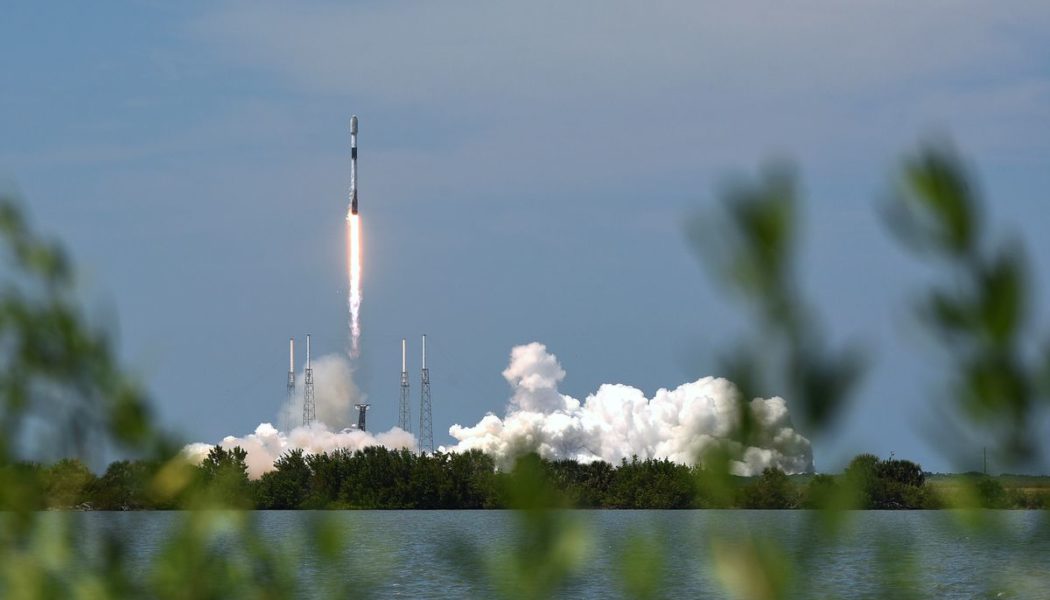The team behind SpaceX’s growing satellite internet network Starlink is in talks with “several” airlines to beam internet to their airplanes, the project’s vice president said during a conference panel on Wednesday. Expanding Starlink from rural homes and onto airlines is an expected move for Elon Musk’s space company as it races to open the broadband network commercially later this year.
“We’re in talks with several of the airlines,” Jonathan Hofeller, SpaceX’s VP of Starlink and commercial sales, told a panel at the Connected Aviation Intelligence Summit on Wednesday. “We have our own aviation product in development… we’ve already done some demonstrations to date, and looking to get that product finalized to be put on aircraft in the very near future.”
Since 2018, SpaceX has launched nearly 1,800 Starlink satellites out of the roughly 4,400 it needs to provide global coverage of broadband internet, primarily for rural homes where fiber connections aren’t available. The company is in the midst of a Starlink beta phase that promises up to 100Mbps download and 20Mbps upload speeds, with tens of thousands of users so far. Most are paying $99 per month for internet under that beta, using a $499 bundle of a self-aligning Starlink dish and Wi-Fi router.
Last year, SpaceX filed plans to test Starlink on five Gulfstream jets. And in March, SpaceX sought FCC approval to use Starlink with so-called Earth Stations in Motion — industry jargon to refer to basically any vehicle that would receive a signal, including cars, trucks, maritime vessels, and aircraft. Musk clarified on Twitter at the time: “Not connecting Tesla cars to Starlink, as our terminal is much too big. This is for aircraft, ships, large trucks & RVs.” Another FCC filing from last Friday requested approval for testing across five US states of an updated receiver with a square-shaped antenna, a basic design commonly associated with aircraft antennae.
Hofeller said the design for SpaceX’s airline antennas will be very similar to the technology inside its consumer terminals, but “with obvious enhancements for aviation connectivity.” Like those consumer antennas, the aviation hardware will be designed and built by SpaceX, he said. The airborne antennas could link with ground stations to communicate with Starlink satellites.
For Starlink to provide connectivity to airplanes flying over remote parts of the ocean, far from ground stations, will require inter-satellite links — a capability in which satellites talk to each other using laser links without first bouncing signals off ground stations. “The next generation of our constellation, which is in work, will have this inter-satellite connectivity,” Hofeller said.
:no_upscale()/cdn.vox-cdn.com/uploads/chorus_asset/file/22648855/1233127360.jpg)
Competition is fierce between Musk’s Starlink network and the growing industry of low-orbit satellite internet providers. New competitors include so-called mega-constellations from Jeff Bezos’ Amazon, which has yet to launch any of its planned 3,000 satellites, and the UK’s OneWeb, which has launched 182 satellites of roughly 640 planned. All of those satellites will be in low-Earth orbit, a domain below the more distant geostationary orbits of larger internet satellites that currently provide internet services to commercial aircraft.
Established US competitors for in-flight internet are Intelsat and ViaSat, which operate networks of satellites in geostationary orbit. ViaSat recently announced plans to use its next-generation satellite network on Delta’s mainline fleet. The California-based company is planning a 300-satellite low-orbit network of its own as well as a new geostationary trio that will start launching early next year. It is already a diehard competitor to SpaceX. ViaSat has threatened to sue the Federal Communications Commission for not doing an environmental review on a recent Starlink modification.
SpaceX appears confident that it can outlast the more established competition. “All in all, passengers and customers want a great experience that [geostationary] systems simply cannot provide,” Hofeller said on the panel. “So it’s going to be up to the individual airline whether they want to be responsive to that, or if they’re okay with having a system that is not as responsive to their customers’ demand.”
OneWeb, which was pulled out of bankruptcy last year by the UK government and Indian telecom giant Bharti Global, is also targeting in-flight internet services with its constellation and has been far more public with its plans than SpaceX. Asked by the panel moderator when customers can expect to use in-flight internet with any of the competing satellite networks currently expanding in low-Earth orbit, OneWeb’s VP of mobility services Ben Griffin estimated “the middle part of next year… maybe sooner.” Airlines want to see developed hardware and services that work first, he added.
“We have been talking to airlines for quite some time, so there’s no lack of interest,” Griffin said during the same panel. SpaceX’s Hofeller was cagey when the question turned to him — “What Ben said is correct. People want to see the hardware, they wanna see the constellation, and so we’re driving that hard as fast as we can. When the announcement will be? To be determined. Don’t know. Hopefully sooner rather than later.”









